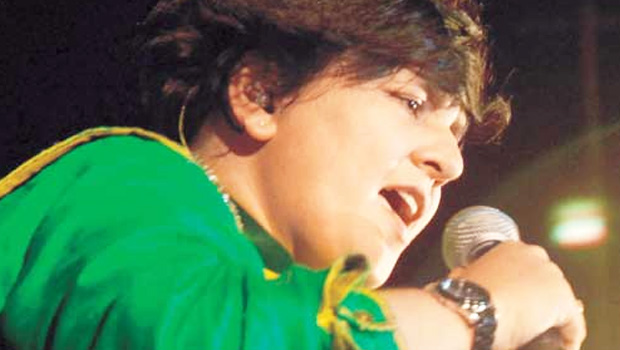
Her popularity grew with the arrival of television in the 1990s, which gave a platform for non-film singers. This was a peculiar sight for the media as when she sang her voice was high pitched and feminine. She chose to adopt a traditionally masculine appearance (which was her identity throughout her youth). Falguni, releasing her debut album two years following the release of Fire, which thrust her into the media’s eyes as she too defied the characters of an ideal woman. The film received massive backlash from the right-wing conservatives who felt it defied the “ideal woman” as it portrayed “non-feminine acts” such as women smoking and seeking sexual liberation. Her debut album ‘Yaad Piya Ki Aane Lagi” (1998) two years after Deepa Mehta released her film “Fire”(1996) which explored a lesbian relationship in the Indian Context. However, along with her Bollywood songs, she is also known to perform Marathi, Punjabi and Rajasthani songs. Following her debut, she went on to record professionally and began her career as a Bollywood singer. Since her debut, she has developed a large fanbase across India, despite her performances being primarily in Gujrati.
#Falguni pathak interview professional#
She began performing at the age of 23, with her professional debut in 1987. She received her Bachelor in Commerce (B.Com.) degree from Smt MMK College of Commerce and Economics Mumbai. However, her older sisters used to dress her up as a boy hence resulting in her androgenous dressing style and short hair. It is believed that Falguni’s parents were expecting her to be a boy. She is the youngest of five children, all girls. Her musical career of combining queerness with her label as an Icon has created comparisons to western singer Madonna hence, being gaining the title, the Indian Madonna.įalguni Pathak was born into a Gujarati family in Vadodara, Gujrat on the 12th of March 1964. The second aspect looks at her rise in the music industry as the Dandiya Queen, for her energetic performances during Navratri. The first aspect covered looks at the inclusion of queer symbolism in her videos and adapting an androgynous attire for her performances. In her musical career, two aspects are considered. The following article looks at Falguni Pathak’s musical career and her rise to fame.
She is also recognised as a ‘Queer Icon’ and referred to as the “Indian Madonna” an outcome of her unconventional dressing style (androgynous) and her attempts to destigmatise homosexuality in the early 2000s. It is performed mainly during the Hindu festival, Navratri. Dandiya is a traditional dance performed primarily in western India prominently in the states of Gujarat and Rajasthan.

Indian singer and composer Falguni Pathak is prominent for her musical compositions, mainly her music based on traditional Gujrati folk music making her also known as the Dandiya Queen.


 0 kommentar(er)
0 kommentar(er)
